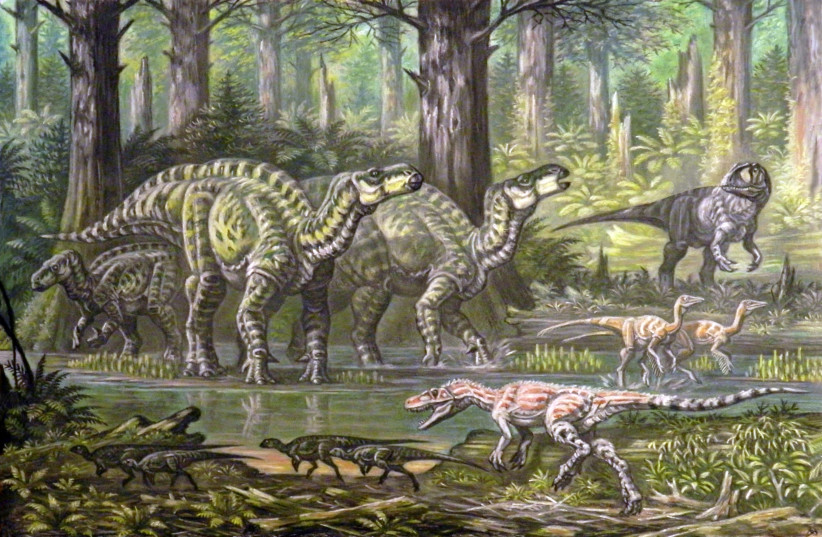 Scientists find leg of dinosaur that was killed by the great asteroid
Scientists find leg of dinosaur that was killed by the great asteroid
JERUSALEM POST STAFF
A dig site at Tanis has proven to be a landmine of archaeological evidence about the day the asteroid hit Earth.

Scientists have found a perfectly preserved dinosaur leg in the Tanis fossil site in North Dakota that they believe belonged to a dinosaur who was killed by the giant asteroid that wiped out the dinosaurs, the BBC reported on Thursday.
The leg is not the only remains found at Tanis. Among the remains were fish that breathed in the debris from the destruction, a fossil turtle skewered on a wooden stake, small mammals and smaller parts of various dinosaur species.
These remains will feature in a BBC documentary about the work done at Tanis that will be released next week and is narrated by Sir David Attenborough. Some of the discoveries will be seen by the public for the first time by the public in the documentary.
“We’ve got so many details with this site that tell us what happened moment by moment, it’s almost like watching it play out in the movies,” Robert DePalma, a University of Manchester graduate student who is leading the dig, told the BBC. “You look at the rock column, you look at the fossils there, and it brings you back to that day.”
While the impact site of the asteroid was identified as the Gulf of Mexico, the devastation carried for thousands of k.m., creating a mixture of remains of both sea and land animals at Tanis.

The fish in this mixture were found with small particles in their gills which were found to be spherules of glass from molten rock that were chemically and radiometrically linked to the asteroid’s impact site.
“When we noticed there were inclusions within these little glass spherules, we chemically analyzed them at the Diamond X-ray synchrotron near Oxford,” DePalma’s supervisor Prof. Phil Manning explained to the BBC.
“We were able to pull apart the chemistry and identify the composition of that material. All the evidence, all of the chemical data, from that study suggests strongly that we’re looking at a piece of the impactor; of the asteroid that ended it for the dinosaurs.”
There is still much debate about whether the object that crashed into Earth was an asteroid or a comet, and according to The New York Times, the remains may be able to help definitively identify which it was.
Zawartość publikowanych artykułów i materiałów nie reprezentuje poglądów ani opinii Reunion’68,
ani też webmastera Blogu Reunion’68, chyba ze jest to wyraźnie zaznaczone.
Twoje uwagi, linki, własne artykuły lub wiadomości prześlij na adres:
webmaster@reunion68.com
